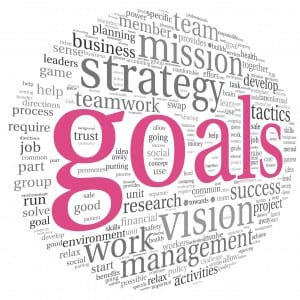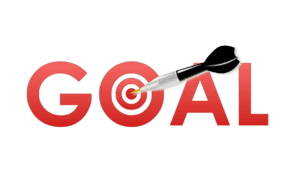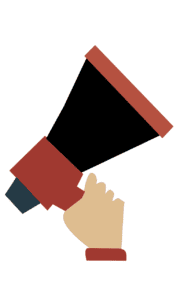
Arguably,to accomplish a mission, it would be very beneficial to have a shared set of goals that everyone understands and everyone is working on together in a unified way to accomplish. Shared goals can contribute to shared situational awareness – a common understanding of what is happening and what the plan of action entails – Answering questions like: What is being done and why? What is the strategy and why? What is each person’s role? How are the roles interconnected? It is easier to function as a team when the goals are well established and well communicated. But what happens when they’re not?
Goal setting
 The goal setting process can begin long before arriving at the scene of an emergency (or it should, anyhow). Policies and standard operating procedures (or guidelines) establish the overarching objectives to be accomplished. The objectives then contribute to goal setting and task-level assignments (e.g., The first person in does this, the second person does that ..). Then, responders are trained and practice their skills with the ambition of accomplishing one or more goals during training evolution’s.
The goal setting process can begin long before arriving at the scene of an emergency (or it should, anyhow). Policies and standard operating procedures (or guidelines) establish the overarching objectives to be accomplished. The objectives then contribute to goal setting and task-level assignments (e.g., The first person in does this, the second person does that ..). Then, responders are trained and practice their skills with the ambition of accomplishing one or more goals during training evolution’s.
These goals (written and practiced) guide the actions of all personnel at emergency scenes. When goals are well established, well practiced and well communicated, it improves the likelihood that personnel will be on the proverbial “same page” at the incident scene (i.e., They have a shared understanding of what is going on and what needs to be done, contributing to shared situational awareness).
The disconnect
But what happens when organizations do not have well established, well practiced and well communicated goals? Teams may function in automatic lock-step formation at an incident scene, seemingly going through the motions of task completion without conscious thought as to whether the actions are actually advancing a goal (because no goal has been established or communicated).
For example, (in a fire scene) the first arriving engine crew pulls the line to the front door while the first arriving ladder crew goes to the roof. To an observer, the incident scene may seem to be following a plan, and indeed the crews may be following a plan with established goals. Or, what is being observed may simply be a collection of independent actions that, perhaps only by luck, are congruent with each other.
Competing goals
In the absence of a common goal, it is not uncommon for individuals to set their own goals. This can be done with consideration to others or it can be done with indifference to others. Competing goals do not always result in bad outcomes but it can result in a lack of coordination. An uncoordinated plan increases the risk of a bad outcome if, for no other reason, than the goals of one team may run counter to the goals of another. Rarely is there a segmentation of teams on an emergency incident scene.
For example, in football, there are two segmented teams (the offensive team and the defensive team). Each takes their turn on the field with a well-established goal (e.g., score a touchdown or prevent the opponent from scoring a touchdown). In baseball, team members perform based on two segmented goals (e.g., when in the field, prevent the opponent from scoring. When at bat, get a hit and run the bases in an effort to score.)
Some sports, like soccer, require a team to play both offense and defense at the same time (i.e., the goal is to score while simultaneously working to prevent the other team from scoring). Emergency scenes are more like soccer. Responders are trying to accomplish simultaneous goals.
Priorities
 Oftentimes, competing goals are a result of competing priorities. Each team of responders has a role to fulfill toward completing the overall incident objectives. All the roles are important. But some responders can operate with blinders on and lose sight of the fact that there are other teams performing roles as well and the teams need to be coordinated.
Oftentimes, competing goals are a result of competing priorities. Each team of responders has a role to fulfill toward completing the overall incident objectives. All the roles are important. But some responders can operate with blinders on and lose sight of the fact that there are other teams performing roles as well and the teams need to be coordinated.
There can be many competing priorities at an incident scene. Individual, crew, division and overall incident priorities exist. But it doesn’t end with the priorities of the responders at the incident scene. There can also be competing financial, political, citizen, environmental and public relations priorities (and probably many more). Each group representing competing priorities have their goals to be accomplished also.
For example, I recently saw on the news where a governor visited the scene of a large wildland fire where there were many agencies involved. The governor’s visit, while commendable, adds an element of complexity to the incident operations. Chances are good that when the governor got the opportunity to have a closed door session with the command team, concerns were expressed (e.g., cost, economic impact to the region, road closures, environmental…). If the command team allows the governor’s concerns to shift priorities, this may also impact the goals.
Rich Gasaway’s Advice
 Goals help to get everyone on the same page and on the same proverbial sheet of music. It’s worth the effort to make a plan and communicate the goals to everyone on the team (or on the scene). It could prove disastrous to assume everyone understands the leader’s intent.
Goals help to get everyone on the same page and on the same proverbial sheet of music. It’s worth the effort to make a plan and communicate the goals to everyone on the team (or on the scene). It could prove disastrous to assume everyone understands the leader’s intent.
It is much easier to support a goal when you know what it is. It reduces confusion and frustration (both, by the way, are barriers to situational awareness). If there is disagreement on the goal, better to work that out in advance of implementation than in the heat of the moment. Or worse, to wait until after the incident unfolds in an undesirable way and then someone say “I knew that wasn’t going to work.”
I recently conducted a teambuilding exercise in a leadership class I was facilitating. The team had to solve a problem and if their plan did not work, it would result in the (fictional) loss of lives. The teams were given time to design and practice their solution. Then, when the time was right, they got to implement the solution at a “real” (simulation) fire scene.
Prior to starting the “real” scenario, I would ask each team member one question: “Do you think your plan is going to work?” If any member of the team said no, I would ask the team if they wanted to continue with the implementation of their goals or go back to drawing board. Some went back to the drawing board. Some trudged ahead (and their plan did not work). The teams that failed had set a goal, locked on to it and ignored the concern of their fellow team member.
The lessons of the exercise were not limited to goal setting. There were also valuable takeaways related to teambuilding, problem solving, communications, conflict resolution, leadership and followership.
Remember that goal setting is strengthened when teams work together with awareness of the overarching plan and objectives. Rarely do teams work in a vacuum at an incident scene. The performance of one team can set up the success – or failure – of other teams.
Action Items
 Discuss a time when you operated in an environment with competing goals. What challenges did you experience? How did it impact the outcome?
Discuss a time when you operated in an environment with competing goals. What challenges did you experience? How did it impact the outcome?- Discuss strategies for goal setting for emergency incidents?
- Discuss ways to ensure team members and other teams are aware of potential competing goals and how to manage those potential conflicts?
- Discuss strategies for communicating concerns about goal accomplishment.
_____________________________________________________

If you are interested in taking your understanding of situational awareness and high-risk decision making to a higher level, check out the Situational Awareness Matters Online Academy.
CLICK HERE for details, enrollment options and pricing.
__________________________________
Share your comments on this article in the “Leave a Reply” box below. If you want to send me incident pictures, videos or have an idea you’d like me to research and write about, contact me. I really enjoy getting feedback and supportive messages from fellow first responders. It gives me the energy to work harder for you.
Thanks,

Email: Support@RichGasaway.com
Phone: 612-548-4424
SAMatters Online Academy
Facebook Fan Page: www.facebook.com/SAMatters
Twitter: @SAMatters
LinkedIn: Rich Gasaway
YouTube: SAMattersTV
iTunes: SAMatters Radio

The situational awareness about how the things are going can help to understand many things. Thanks for sharing this information with us, subscribed your blog.